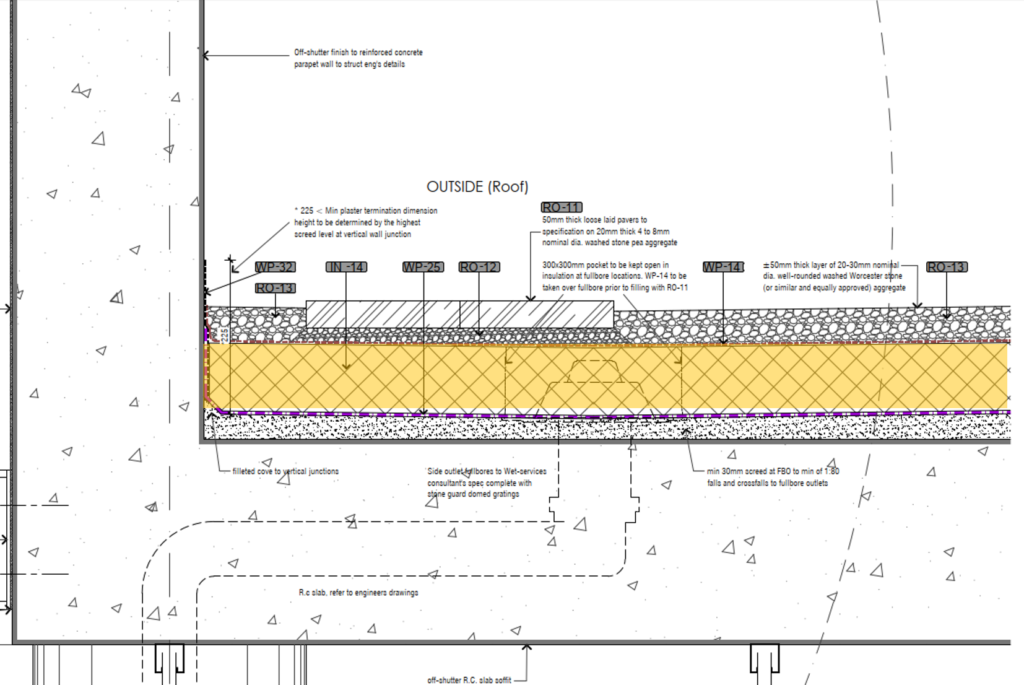Roofs are a critical part of the building envelope that are highly susceptible to solar radiation and other environmental changes, thereby, influencing the indoor comfort conditions for the occupants. Roofs account for large amount of heat gain/loss, especially, in buildings with large roof area. The roof thickness and combination of insulation layers proves to be a crucial factor in reducing effects of direct solar irradiation.
The flat concrete roof at the HPI d-school Building includes a layer of expanded polystyrene (EPS) to mitigate solar heat gains in summer and heat losses in winter, thus efficiency and efficacy of the HVAC system in the building for thermal comfort.
EPS is a type of insulation that provides thermal and acoustical insulation with characteristics such as low weight, high moisture resistance and high structural strength.

GREEN STAR CREDITS
The aim of this credit is to encourage and recognise designs that minimise greenhouse gas emissions associated with operational energy consumption.
The aim of this credit is to encourage and recognise buildings that achieve a high level of thermal comfort.
Copyright 2025 Hasso Plattner d-school Afrika*